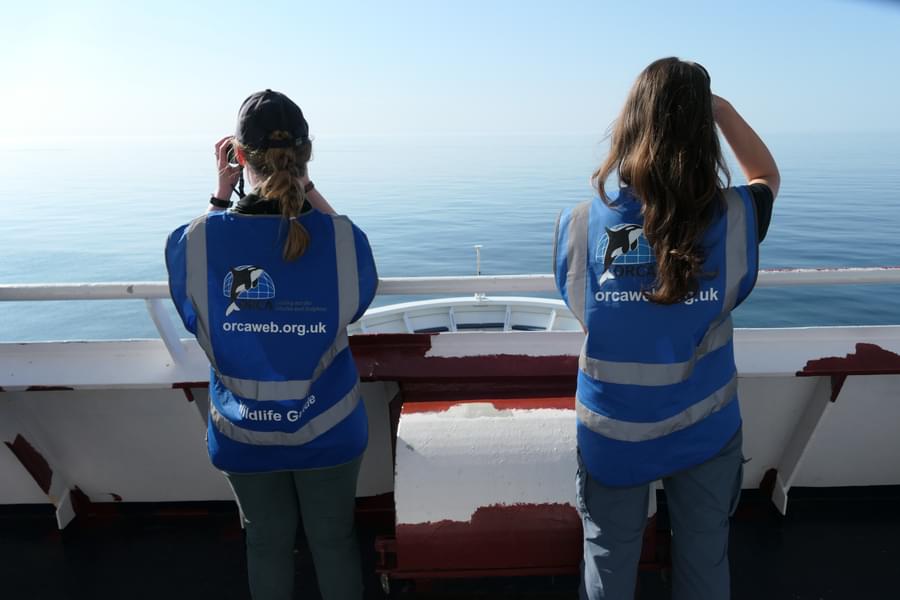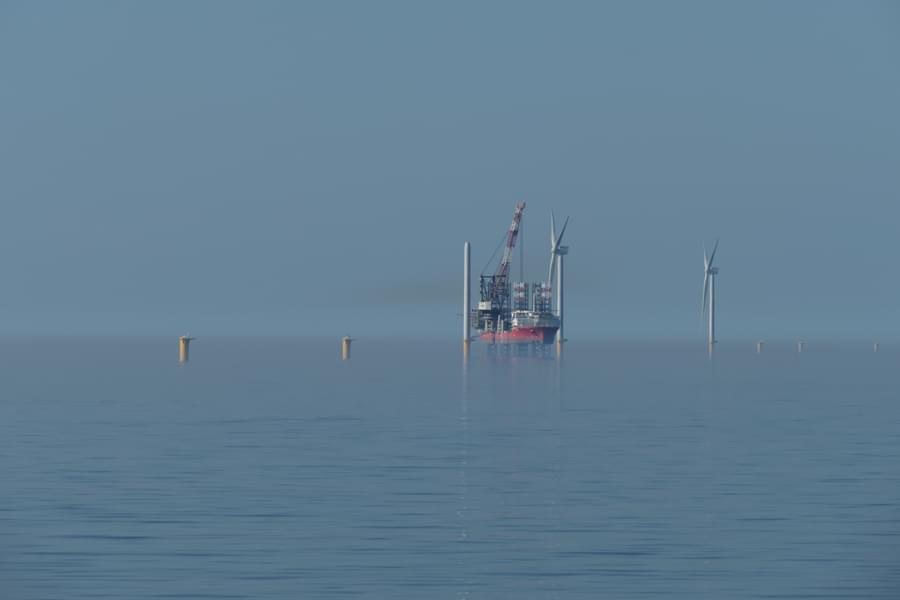Hello, Ocean Conservationist Mathilde & Eilidh here from DFDS King Seaways. We are in the middle of this year’s North Sea season, and the first half of the season has been pretty decent with many sightings of our four main species. The season started off a bit slow with just the occasional harbour porpoise, although the sea conditions weren’t always the best. During this time we did get to see quite a lot of both grey and common seals. The wind came from a northeasterly direction for nearly two months, which made for very cold observations and some more waves. From mid-May the North Sea calmed down considerably and the wind turned away from the north, which is when the sightings really started to pick up. This is when we started to see our white beaked dolphins, bottlenose dolphins and minke whales. Many passengers joined us on the observation deck, and were really excited to see some of the North Sea’s amazing wildlife.

We have seen white-beaked dolphins at least a couple of times per week, always in small groups, and sometimes they came quite close to the ship. looked like they were coming to bow ride us. The white-beaked dolphins have been able to put many smiles on the faces of passengers. Sometimes these passengers were surprised that we have dolphins in the North Sea and seeing them was a great start or finish to their holiday! There was a period where we started to see the white-beaked dolphins in roughly the same area every day, maybe there were lots of fish in that area, but the moment we started to think there was a pattern to their sightings, they disappeared again.

Early in May, we had our first minke whale sighting of the season. And soon after that , sightings picked up, with us now seeing them a couple of times per week. What has been really incredible is quite a few of these minkes have been seen breaching. This tends to be a rare occurrence and we only saw it happen once last summer. However it has already happened at least 5 times this season. We do not know why they are breaching, but it is an amazing sight! Luckily, for most of these encounters, some passengers were present to see them launching out of the water.
Our least common sighting is that of bottlenose dolphins. We do know they have been seen from the English coastline almost every day, but it seems they are a more coastal species and the ship’s route takes us too far from the coast to see them often. However when we do get to see them they are in bigger groups, leaping around, and sometimes this happens between the piers of Tynemouth and South Shields. The best thing about these sightings close to port is we have many passengers with us on the observation deck and everyone gets to see the dolphins!
The sightings of our harbour porpoises until now have been limited. Especially in the Dutch part of the North Sea, the sightings have been low in number. One reason for this could be the construction of a new wind park. When we started the season, all the foundations of the wind park were already built. This was good news as it meant the noisy pile driving had finished. The pile driving is the phase where harbour porpoises are known to disappear up to 12km from the area of construction. Throughout these past few months we have slowly seen more turbines being built. It is interesting to see this construction happening during our time on the sea. It also means this is a topic we talk about a lot, as people want to know what the effect is of these wind parks on marine life. In the last few weeks, with the warm summer weather, we have been seeing some more porpoises; a theory could be that the porpoises are slowly coming back to the area now the noisy construction work has finished.. Even though the porpoise numbers seem lower, they are still our most commonly seen species.

Currently there is a marine heatwave happening in the North Sea. The northeast coast of the UK is currently around 5 degrees warmer than normal. If this heatwave continues it could mean mass mortality of fish and other marine animals. It will be interesting to see what effect this heatwave will have on our cetacean species. Minke season (July-September) is about to start, so we are waiting to see if there is an increase in sightings like the last couple of years. And what of our dolphins, as they eat lots of fish off the UK coastline? This heatwave is probably going to temporarily affect these populations, stressing the importance of our monitoring programme here. We will be keeping a close watch and tracking any changes taking place.
One highlight so far this season has been the feeding frenzies we were lucky enough to witness. On the horizon, you initially spot the circling birds, seeing more and more as the gannets start dive-bombing the water. Then you know to focus on that area, as often there are other animals feeding on the same fish as the birds. In the middle of the swirling chaos of birds, waves, and fish, we have spotted seals, porpoises, white-beaked dolphins, and lunge feeding minke whales! (Not all at the same time though, that would be quite something!)
We can’t wait to see what the rest of the season will bring! If you are travelling on the King Seaways, please come along to our talks to learn more, or watch out on deck with us - we would love to spot some of the North Sea’s wildlife with you.

